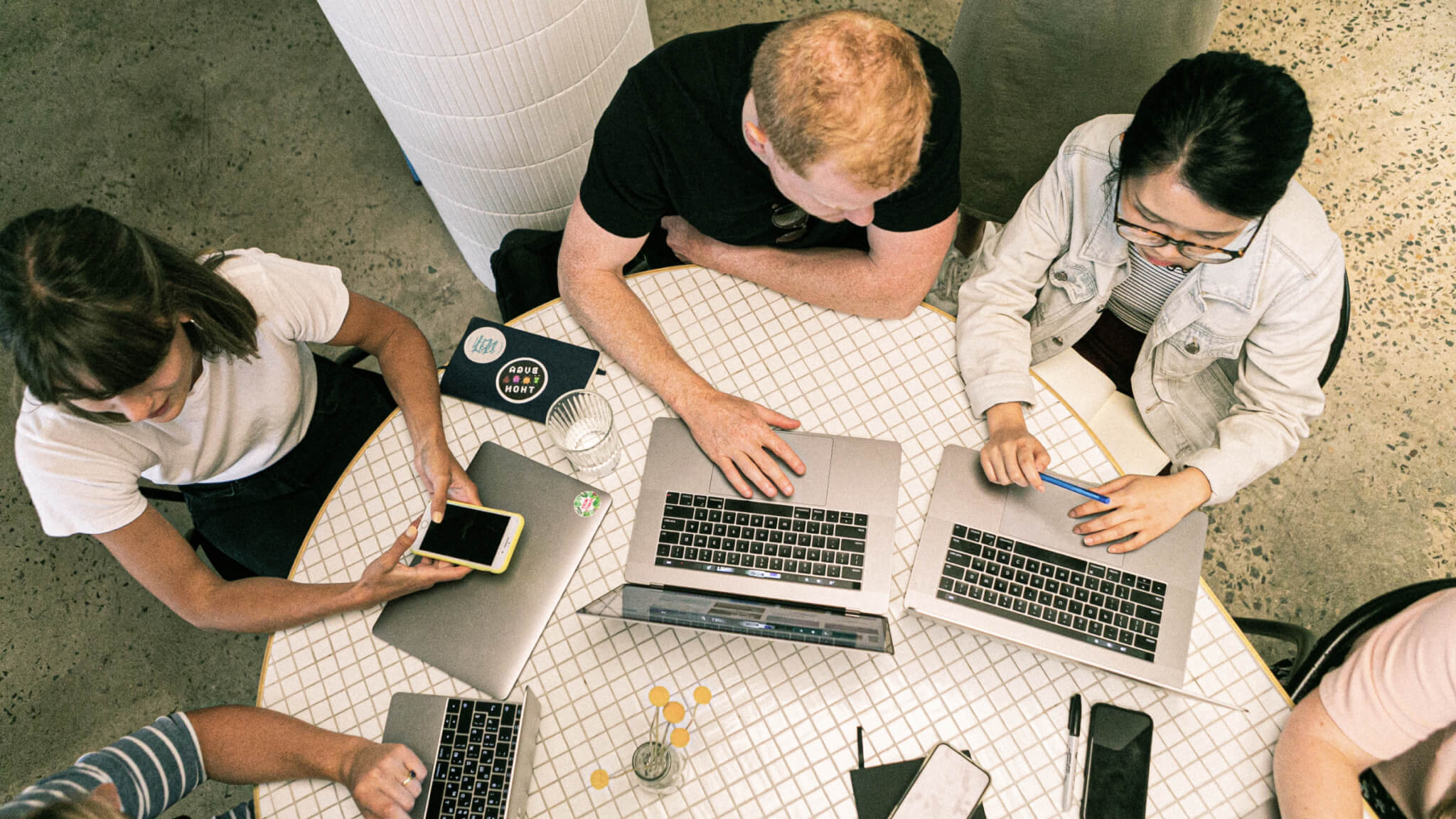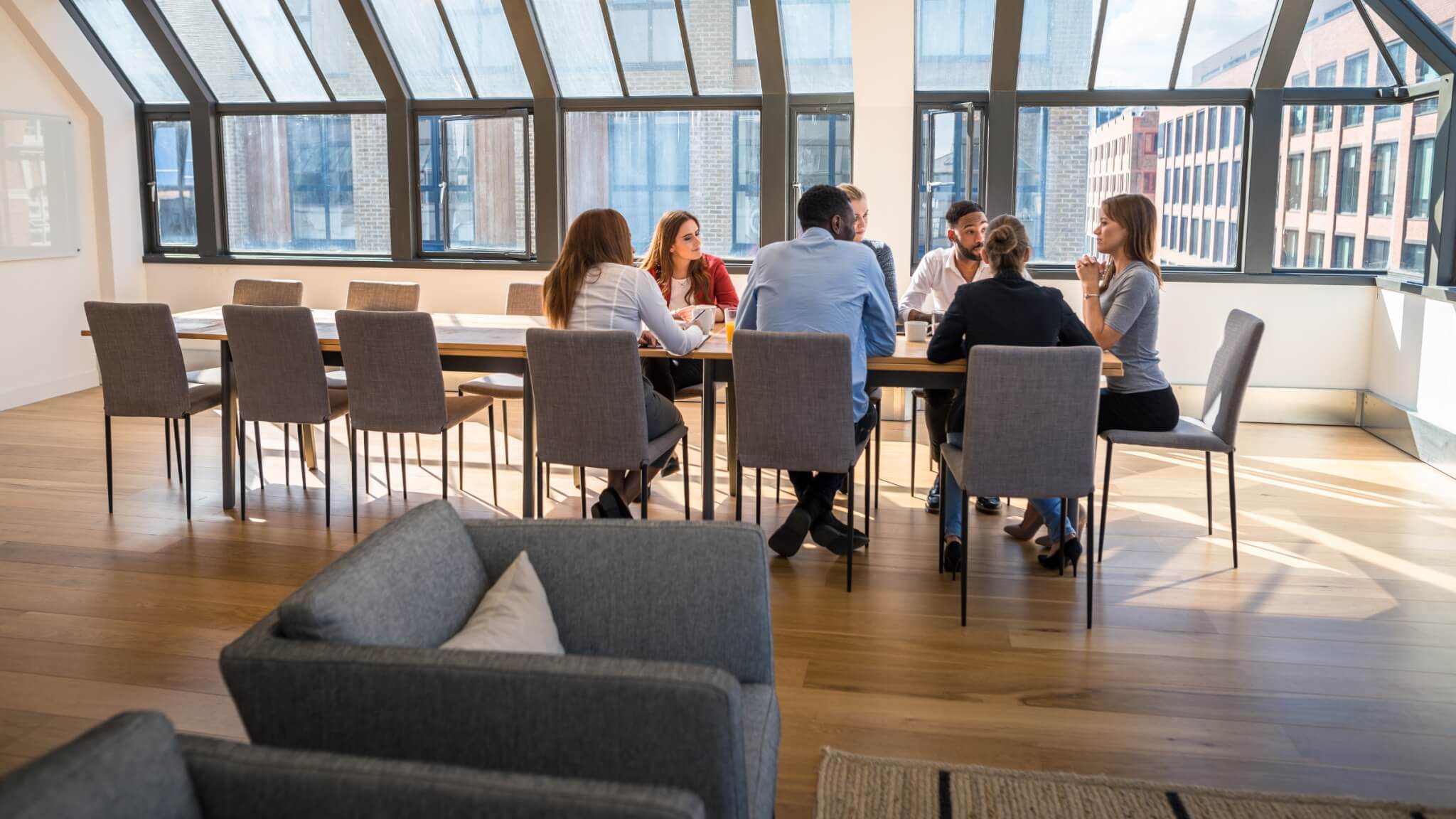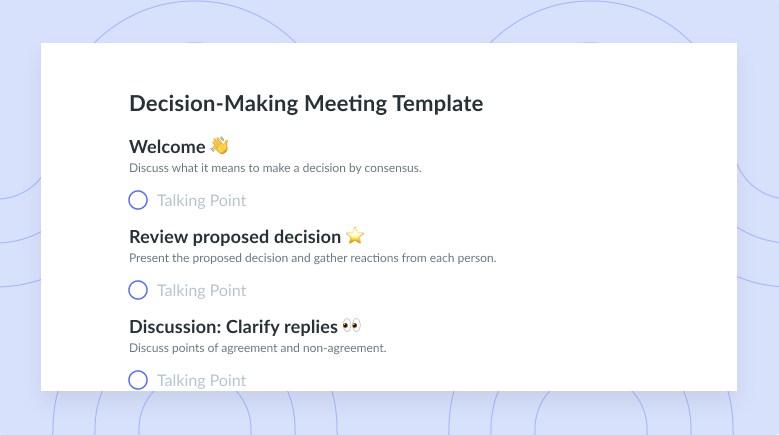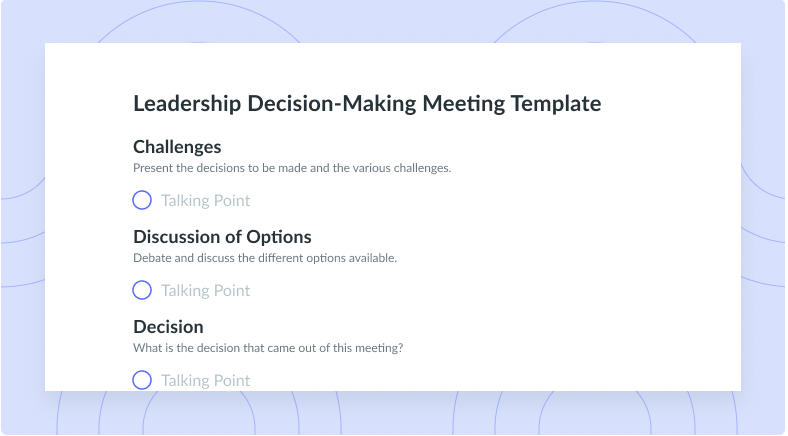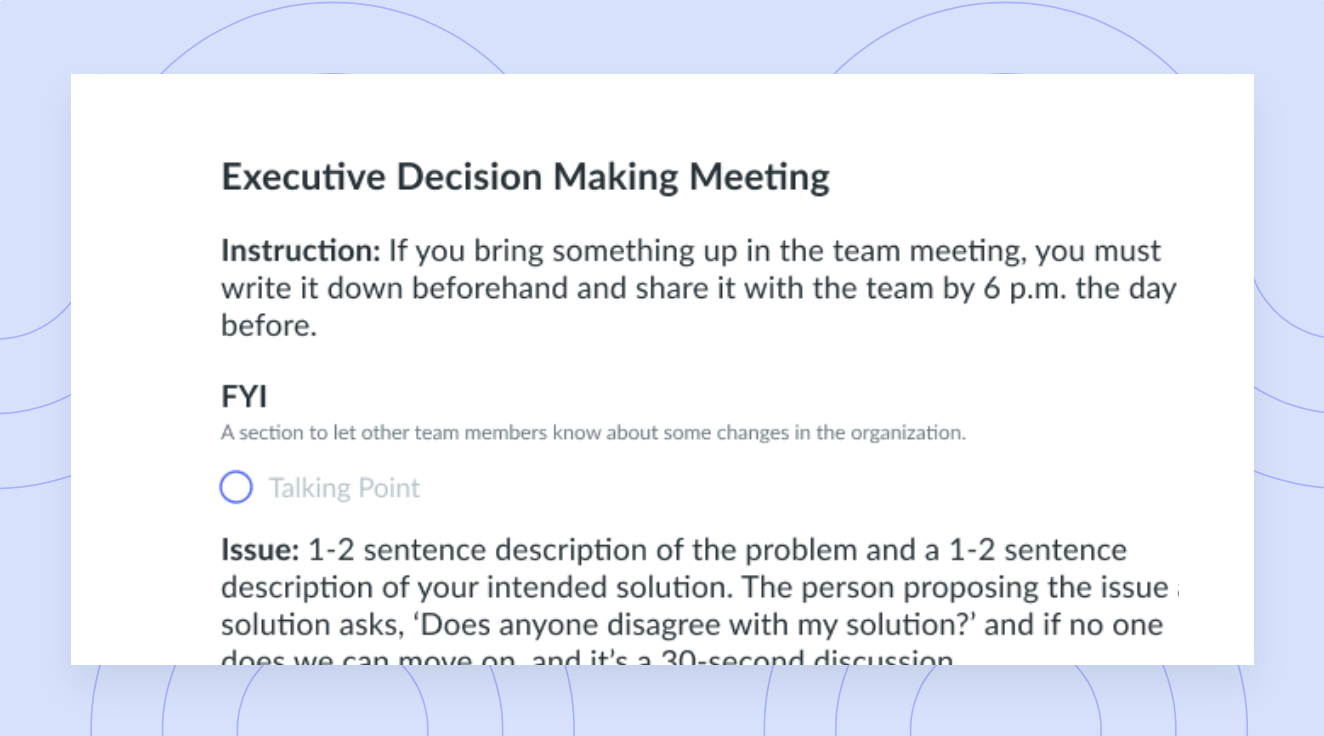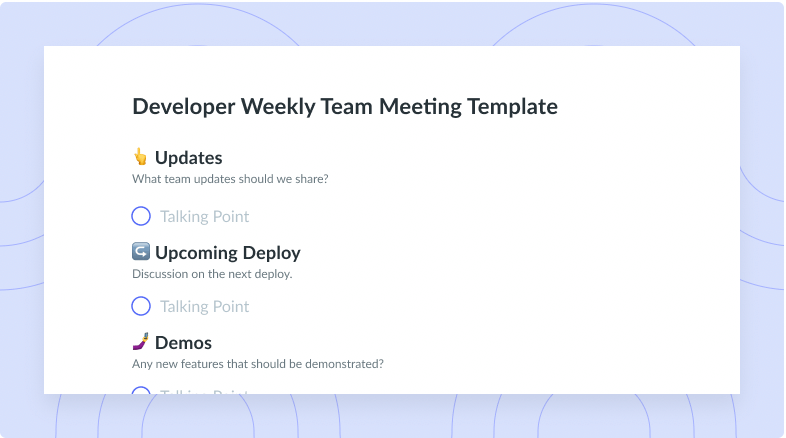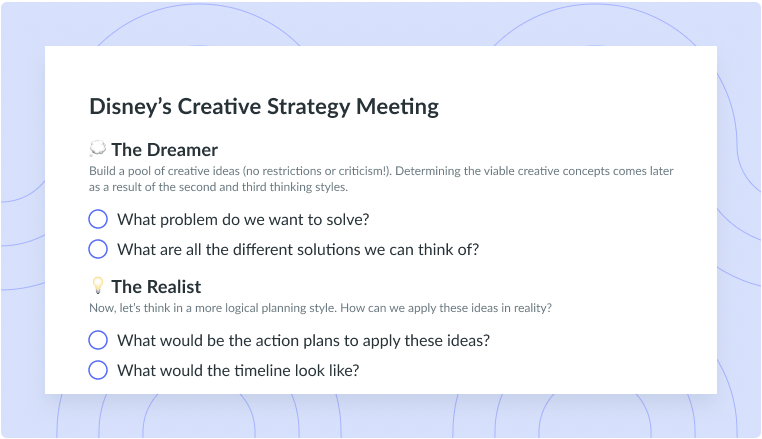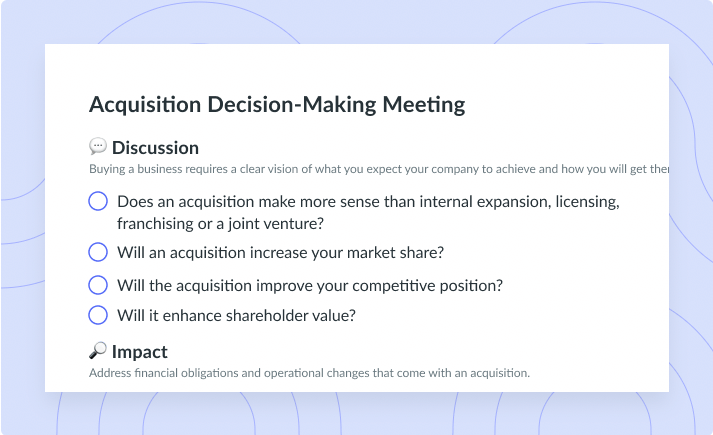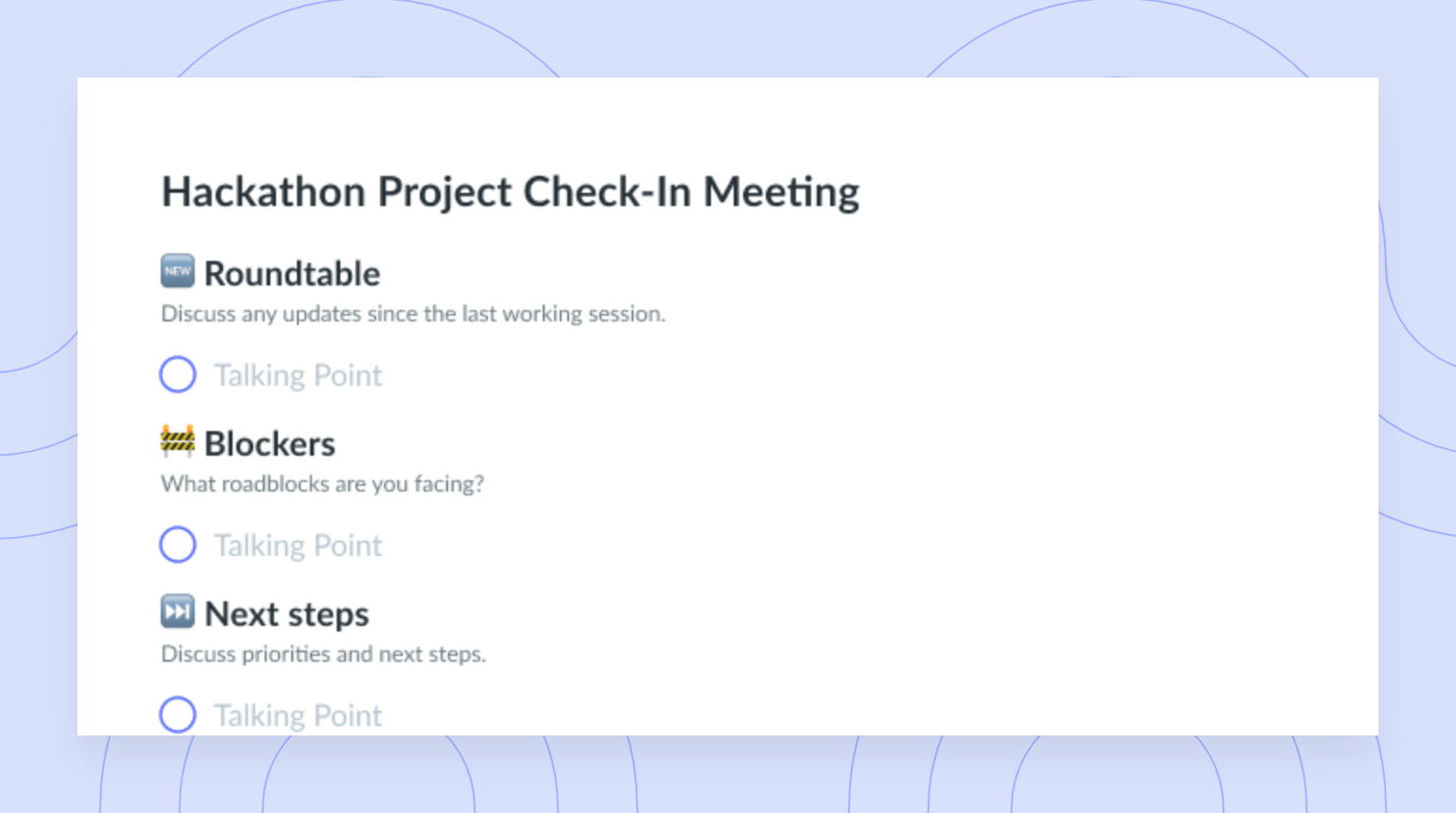10 of the Most Effective Group Decision Making Techniques
Check out these 10 group decision making techniques to collaborate effectively with your team on decisions that matter.
As leaders, there are many decisions that we can make on our own but often, engaging the opinions and perspectives of others enhances the decision that is made. The group decision-making process can differ greatly from organization to organization because each team is unique. Group decision-making techniques can offer you and your team some structure when it comes to making effective decisions and finding alternative solutions. Fellow has outlined 10 group decision-making techniques that will help you reach a final decision, even with a large number of group members.
- What is a group decision-making technique?
- 10 Group decision-making techniques
- Free group decision-making meeting templates
- How to use Fellow for effective group decision-making
What is a group decision-making technique?
Group decision-making techniques are different ways to approach making a decision during a group discussion with your team. The group decision-making process doesn’t need to be time-consuming nor exhaustive- it’s all about choosing the right approach for the specific situation and an approach that fits well with your team culture. You can engage decision-making groups when an outcome will affect your entire team so that everyone’s opinion is considered and everyone’s views on the matter are valued so that you can come to a final decision together. By using a group decision-making technique, you’ll see engagement surge, productivity rise, and issues be resolved with a lot more ease, especially among a group of experts.

Spend less time in meetings and more time executing decisions
Optimize your team’s meeting efficiency, allowing you to focus on executing decisions rather than being stuck in lengthy discussions. Experience fewer interruptions, clearer action plans, and increased productivity with Fellow, the all-in-one meeting management software.
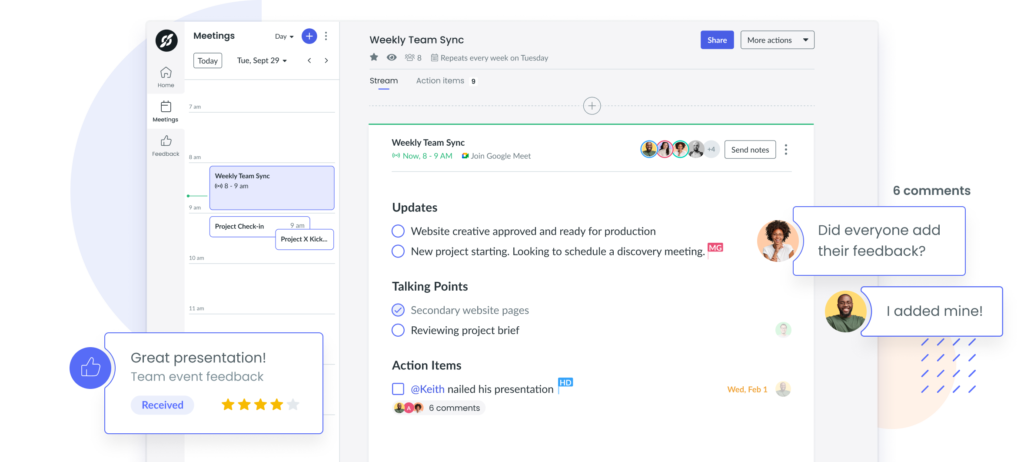
10 Group decision-making techniques your team needs to know
- Brainstorming
- The Delphi Method
- Weighted Scoring
- Nominal Group Technique
- Possibility Ranking
- The Stepladder Technique
- Pros and Cons list
- Didactic Interaction
- Decision-trees
- Consensus Mapping
1 Brainstorming
A brainstorming session is a type of group decision making that can be really effective when you need to raise potential ideas and solutions. This offers a free-flowing structure to the discussion and allows the whole team an opportunity to share their ideas on how to approach a particular situation. The main goal of brainstorming is to come up with as many suggestions as possible and to then decipher which idea may be the best approach. These meetings are a little more geared towards generating ideas than coming to a final decision but often, one idea stands out from others and can be selected as the most effective solution.

2 The Delphi Method
The Delphi technique is a good option when you need to reach a group consensus for a major decision. This group decision-making process takes all of the ideas generated by your team and compiles them for the leader of the group to break down into a smaller list of possible approaches. Those fewer options are then taken back to the group for further discussion and collective consideration. Essentially, the choices are condensed until a majority decision can be made. The idea is that when there are fewer options available a decision is reached with much more ease and with collective agreement from you and your team members.
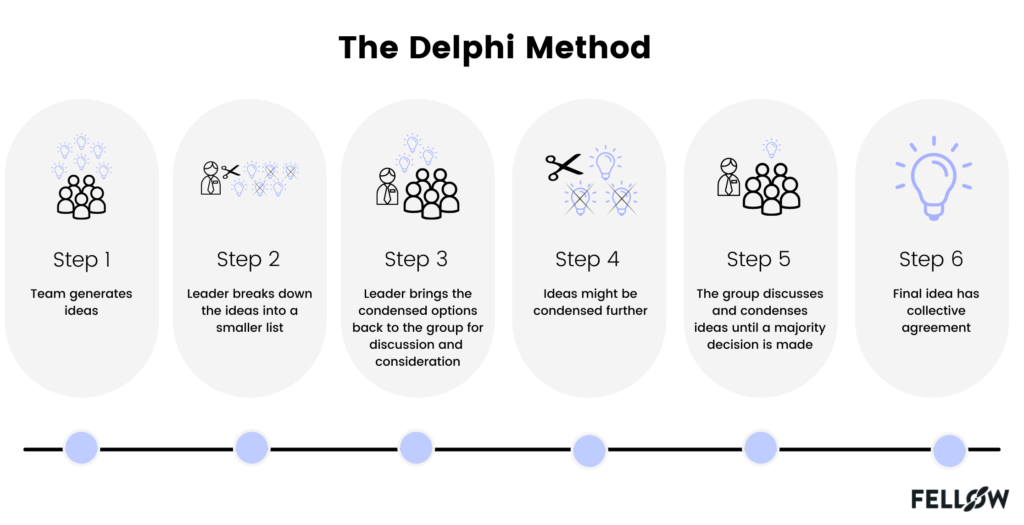
3 Weighted Scoring
Weighted scoring is ideal to use in a situation where your team has many ideas for possible solutions but have not necessarily considered the implications of each decision thoroughly. The weighted scoring technique is founded on the idea that certain ideas or approaches may be riskier than others and therefore their implications need to be considered. Each item is evaluated against criteria such as the business value, costs, risks, and adoption. Each of these criteria is assigned a score based on the weighting (impact) of them. You’re looking for an approach that will score high in business value, high in adoption, score low in cost, and low in risk. After weighing each idea, you can tally up the scores to make an informed team decision.
4 Nominal Group Technique
The nominal group technique builds on the brainstorming discussion by including a voting process at the end. Not only does each group member cast a vote, but each person is given the opportunity to also give an explanation as to why they voted for whichever decision or option and why they feel as if it’s the best choice. Depending on the topic of discussion, there are a few different ways that you can use the nominal group technique. If the topic is more sensitive or controversial, you may want to engage your team with a survey with the option to remain anonymous. Otherwise, this technique can be used during your meeting in an open discussion.
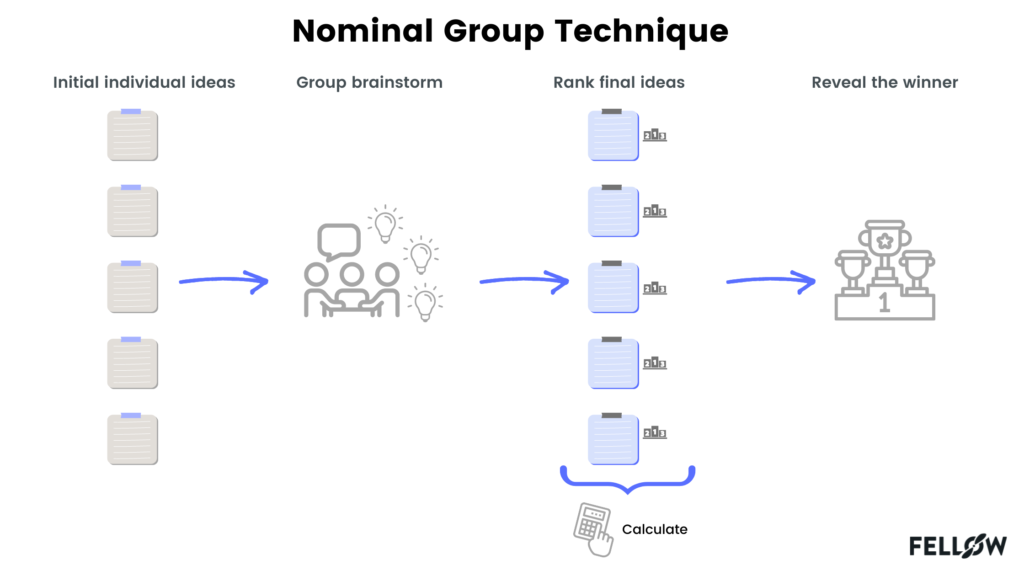
5 Possibility Ranking
Possibility ranking means determining the best option through using a voting system or creating a list as a team to prioritize ideas and approaches. When you’re trying to make a collective decision about a question or issue that has many different potential outcomes, this can be a great group decision-making technique to engage. This technique can be used in an email, in a survey, or in your live meeting. You can begin with asking everyone to make a personal list of how they might rank different options or approaches and then combine lists to see if there are common opinions amongst the group so that you can come to a consensus. After you determine the average of the best option, you can take that approach knowing that the majority support it and agree with it.
6 The Stepladder Technique
Similar to the Delphi method, the stepladder technique encourages each team member to give their personal opinion on a matter, before anyone can be influenced by the rest of the group. This prevents groupthink and encourages authenticity and honesty in your team members’ answers. There are a few steps required for this approach:
Step 1: Before meeting as a group, present the task to your team. Make sure to give enough time to everyone to think about their opinion or decision on how to best accomplish the task at hand.
Step 2: Create a core group of two members and have them discuss the task or issue.
Step 3: Add a third group member to the core group. This third member presents ideas to the first two members before they hear the ideas that have already been spoken about. After all three members have laid out their solutions and ideas, they discuss their options collectively.
Step 4: Repeat the same process by adding a fourth member, fifth, sixth and so on, to the group. Make sure that there’s enough time for discussion after each added member has presented their views.
Step 5: Make a final decision after everyone has been brought in and shared their ideas.
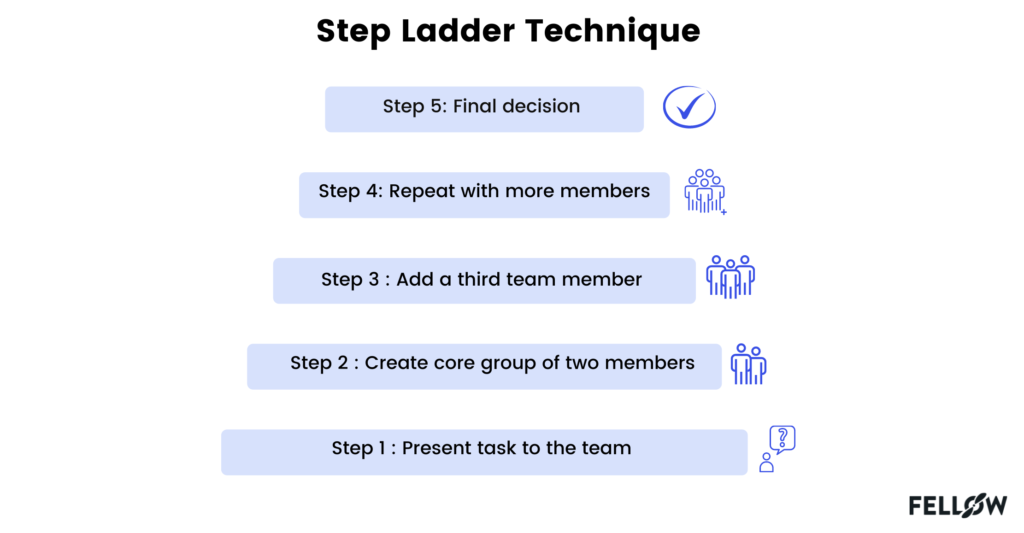
7 Pros and Cons list
In business, a pros and cons list is often referred to as Dialectical Inquiry and can actually be quite effective. Dialectical inquiry is a group decision-making approach that tries to fight against groupthink. Philosophical in nature said to have originated with Plato, this group decision-making technique asks group members to consider both the thesis and antithesis to any idea. When using this technique, split participants into two groups: those advocating for an idea and those advocating against it. Each group has the chance to explain and highlight why they feel as if their decision will produce the best business outcomes and why the alternative opinion may not make as much sense.
8 Didactic Interaction
Didactic interaction is similar to your pros and cons list or do dialectical inquiry, but unfolds a little differently. This approach is only applicable in certain situations but works very well when the right opportunity arises. The type of problem should be such that it results in a “yes” or a “no” solution. These are typically major decisions that will have a large impact on the way the business operates and will affect each employee as well. Such types of decisions require extensive and sometimes exhaustive discussions that can be time-consuming. Using this approach, you can simplify the process of investigation, waste no time and get straight to the point, without asking for any kind of elaboration.
9 Decision-trees
The decision tree technique is great for forecasting outcomes to different decisions. Decision trees are highly visual and operate as a type of non-linear mind map so that you can predict how certain approaches to a situation may turn out. Because this model of decision-making isn’t linear, you and your team can come up with creative ideas and make multiple potential decisions to understand which one has the most beneficial outcome. The decision tree starts out with one question, which is the root of the tree, which then branches out into many different possibilities. Branches will lead to nodes (outcomes) and subsequently, you can add a leaf, marking a rule or final decision.
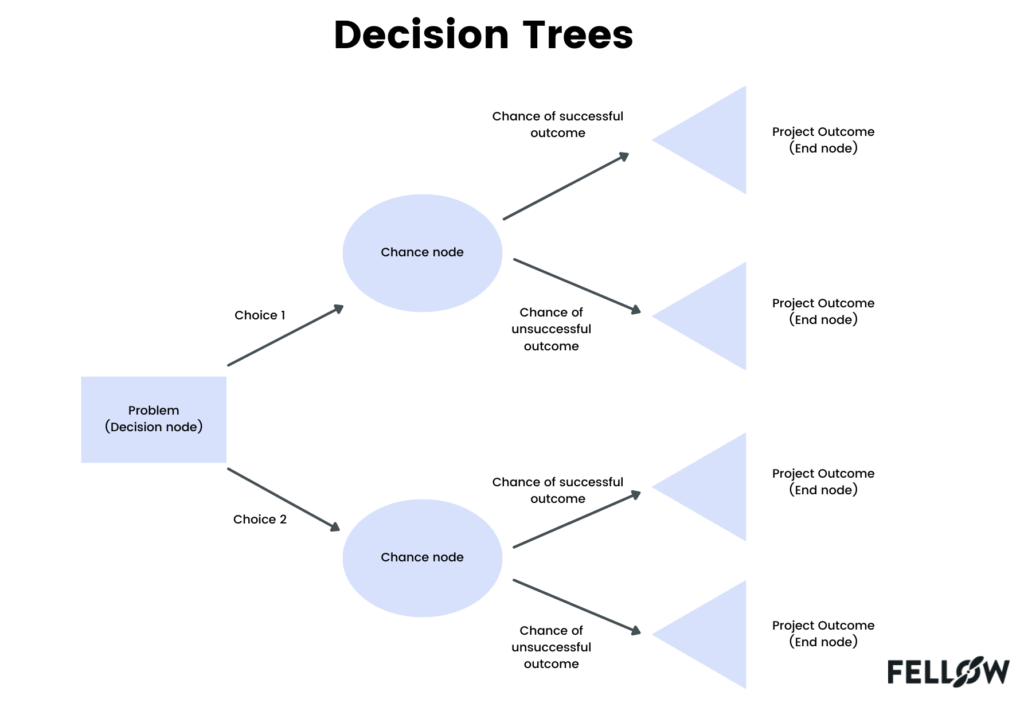
10 Consensus Mapping
Consensus mapping begins with your team generating and developing ideas. It then attempts to arrive at a decision by pooling these ideas together, which have been generated by several task subgroups. The ideas generated by the task sub-groups are further developed collectively and then narrowed down into a smaller number of ideas, with a stronger focus. Subsequently, all the ideas are again narrowed down into an even smaller number of ideas until the group is able to come to a mutually acceptable solution to the problem or situation. This technique is best suited for multi-dimensional problems, with interconnected relationships throughout the business, and involves several steps to coming to a final decision.
Free group decision-making meeting templates
Decision-making often gets hampered by unstructured meetings that lack focus. Fellow’s meeting templates are designed to guide the decision-making process, providing a clear structure for discussions. By utilizing these free templates, teams can efficiently navigate through agenda items, ensuring that every aspect necessary for making an informed group decision is covered.
Try them out below:
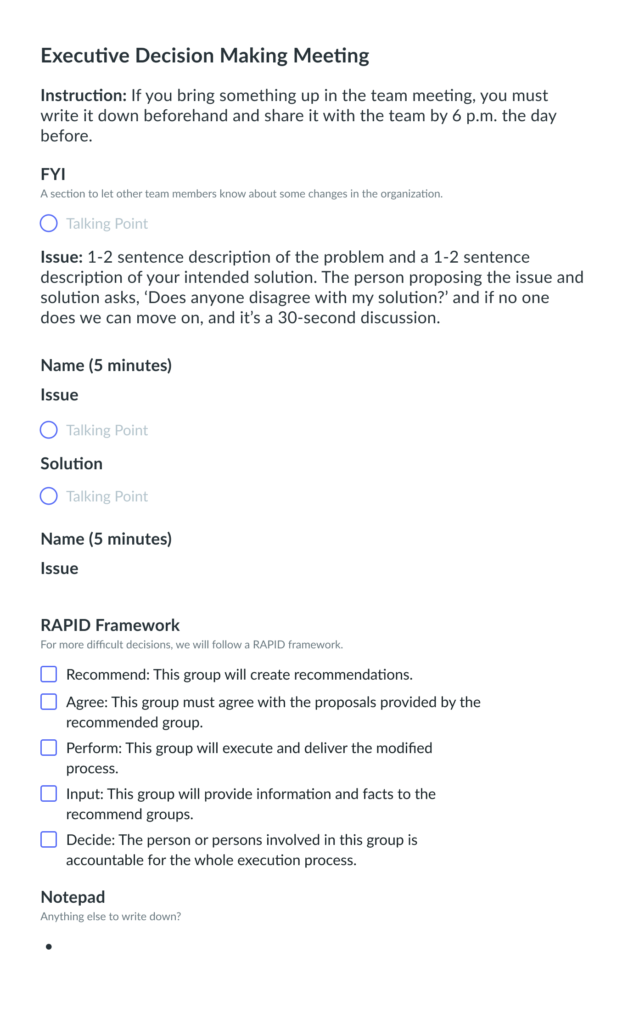
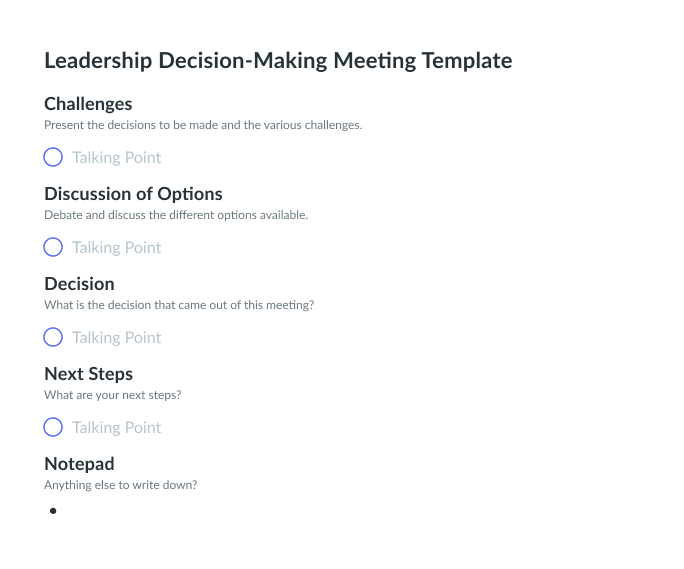

How to use Fellow for effective group decision-making
Fellow is the perfect solution to help teams reach a decision collectively. Fellow streamlines the entire decision-making process with its user-friendly interface and AI-powered features. Gone are the days of scattered notes and lost ideas – Fellow keeps everything in one place, making it easily accessible for all attendees.
Fellow offers several features that are highly useful in facilitating group decision-making techniques. By structuring the decision-making process, creating a collaborative environment, and ensuring transparency in communication, Fellow can immensely aid in making group decisions efficiently.
Here’s how:
- Structured agendas: Fellow enables teams to build structured meeting agendas that outline discussion points, ensuring all relevant topics are addressed. This results in a more focused and productive conversation which progresses towards decision-making. Leverage Fellow’s AI features to generate talking points and record, transcribe, and summarize the conversation.
- Real-time collaboration: Fellow allows team members to collaborate on meeting agendas in real-time. Everyone has the opportunity to contribute to the discussion points, resulting in a wider range of perspectives and ideas that inform the decision-making process.
- Clear communication: With Fellow, teams can document decisions made during the meeting for everyone to see. This provides clarity on what was decided, why it was decided, and who is responsible for the next steps.
- Record keeping: Previous decision-making processes and their outcomes can be easily retrieved in Fellow, allowing for reflection and learning. Understanding past successes and failures can be instrumental in informing future group decisions.
- Action items tracking: Fellow tracks action items, assigns owners and deadlines, ensures decisions are put into action, and maintains accountability.
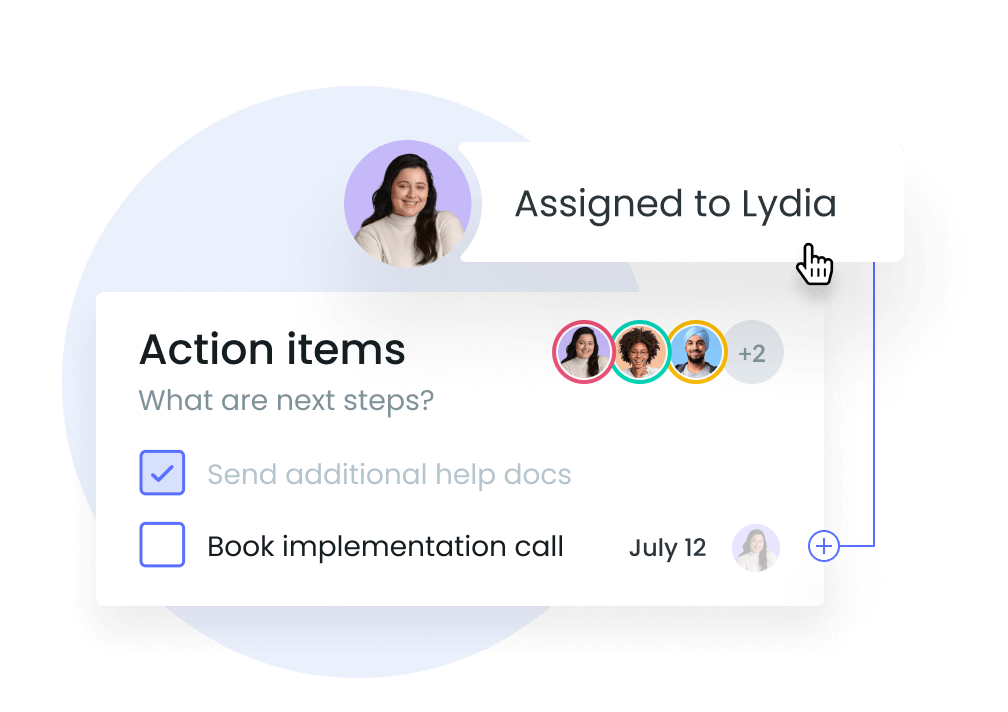
- Feedback mechanism: Post-meeting, attendees can provide feedback on the effectiveness of the meeting, including the decision-making process. This allows for continuous refinement of the process to ensure it becomes more efficient over time.
Hence, with a range of powerful tools aimed at optimizing group collaboration and decision-making, Fellow significantly elevates the process of group decision-making by making it more efficient, inclusive, and transparent.





